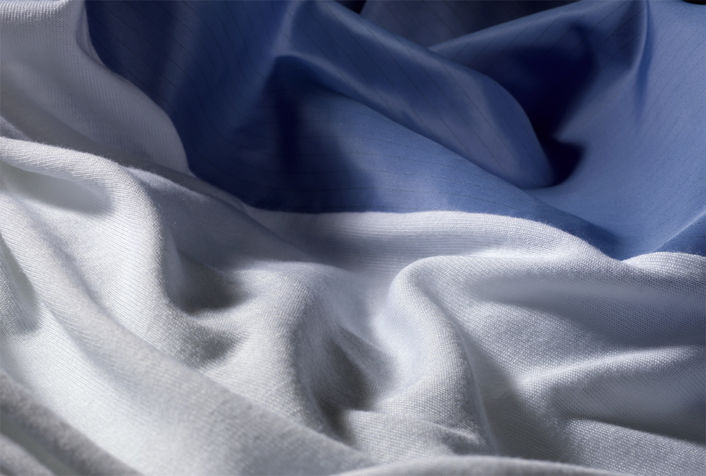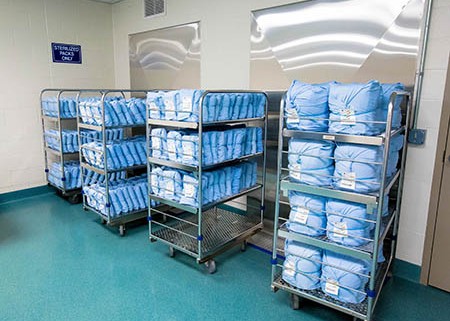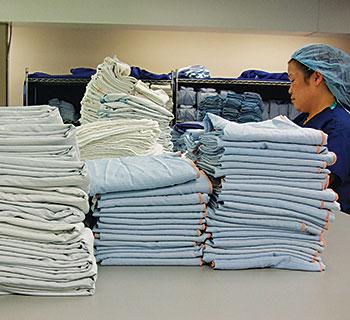Reusable Textiles; Benefit to Healthcare Facilities NEW STUDY
Reusable Textiles; The textile service industry has long advocated the financial advantages of reusable (cloth) textiles rather over their disposable (paper/synthetic) counterparts,
By Joseph Ricci / Special to Healthcare Facilities Today
The textile service industry has long advocated the financial advantages of reusable (cloth) textiles rather over their disposable (paper/synthetic) counterparts,especially in the healthcare space where maximizing operational savings is critical.
The industry can now add an environmental argument — backed by recent scientific data — to its advocacy of reusable textiles.
A new, independent study conducted by engineering and scientific consulting firm Exponent and PE International, a global leader in strategic consulting and sustainability, finds reusables offer a lower environmental impact, and provide greater sustainable options for the healthcare and private businesses that employ them.
The independent study, commissioned by TRSA, the leading global textile services trade association, compared three types of reusable textiles against alternative disposable products.
Those products included isolation gowns, wipers and food-service napkins
The study found:
- Reusable isolation gowns offer clear environmental benefits compared to disposable products
- Reusable wipers have a clear benefit derived from raw-material differences
- For napkins, product weight and recycled content offered the greatest influence on results, indicating heavier, intensely washed reusables have significantly less impact than single, heavier disposables.
Of interest to healthcare professionals, the study concluded reusable isolation gowns, regardless of product weight, resource consumption or waste, are more environmentally friendly.
Even the most resource-conservative and least wasteful (best) disposables have greater impacts than the worst reusables on:
- Climate change
- Smog
- Fossil fuel depletion
- Acid rain
- Algae bloom
The impact
For healthcare facilities, these findings offer a bright spot in an otherwise challenged environment.
By introducing reusable isolation gowns and wipers where they are not already in use, the healthcare community has an opportunity to reduce its environmental footprint.
The incorporation of more reusable textiles at healthcare facilities eliminates once-and-done disposable products, thus reducing their impact on the millions of tons of waste added each year to American landfills.
Eliminating this waste has a significant financial aspect, as well.
According to the Joint Commission on Accreditation of Healthcare Organizations, the average U.S. hospital spends between $44 and $68 per ton to dispose of waste.
Most American hospitals generate about 6,600 tons of waste per day. Using that waste model, a 2005 study from Phillips & Associates, Inc., found that if a 300-bed hospital were to use disposable surgical products rather than reusables, they would incur additional costs of upwards of $250,000.
The environmental impact is not limited to a product’s end of life.
As commercial laundries continue to make technological advances in equipment and efficiency, the environmental impact of reusable textiles continues to lessen.
For example, washing a pound of healthcare textiles years ago required as much as three gallons of water.
Today, as little as three-quarters of a gallon of water is needed to launder those same textiles.
Additional advances are being made through the use of advanced water treatment systems and recycling as well as reusing water.
A wealth of technology improvements also reduces the natural gas and oil needed to power washers, dryers and ironers.
The end result of these advances is that it’s not only becoming more environmentally friendly to launder textiles, it’s also becoming less expensive as fewer natural and chemical resources are needed.
One additional area often overlooked is that disposables require more on-site storage than reusables delivered daily to healthcare facilities. This is space that might be repurposed for more revenue-producing functions.
The solution
Healthcare facilities seeking to shrink their environmental footprint, while also saving money, should contact a textile service provider in their area with “Hygienically Clean — Healthcare” certification.
These providers can assess each facility’s needs and help create a plan that makes sense and best serves its needs.
Many of these textile service providers can also work with healthcare facilities to create a financial model that demonstrates the cost benefit of converting from disposables to reusable textiles.
It’s important to note that while both reusable and disposable isolation gowns provide equivalent levels of protection, the median lifespan of a reusable isolation gown is approximately 64 washes whereas disposable isolation gowns are single use items. Reusable gowns are typically made from woven polyester fabric, while disposables are made from a nonwoven polypropylene fabric.
As hospitals and other healthcare facilities face innumerable financial and regulatory challenges, the ability to improve their environmental footprint absent a large capital expenditure is attractive. Reusable textiles make possible a greener, more cost-effective organization.
The science
The study compiled data collected by TRSA member organizations from 2012, evaluating reusable and disposable isolation gowns, wipers and napkins. Secondary data on product composition and manufacturing was taken from a range of sources between 1994 and 2013.
Additional data was compiled to model material production, energy use and other factors from PE International’s database.
Parameters for evaluating reusables included delivery distance, delivery utilization, product weight, manufacturing energy, number of uses and washing scenarios.
For disposables, the evaluation parameters included delivery distance, delivery utilization, product weight and manufacturing energy.
Finally, the study considered transportation to a standard landfill and environmental factors related to landfill disposal.
[:]






Deja una respuesta